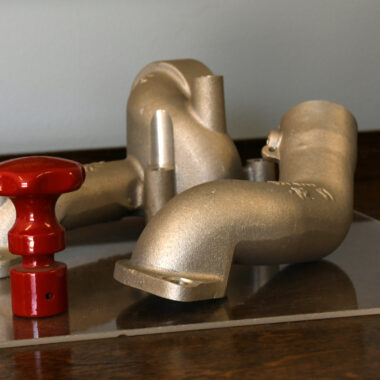Aluminum Casting Proficiency: Methods to Raise Your Manufacturing Process
Aluminum Casting Proficiency: Methods to Raise Your Manufacturing Process
Blog Article
Study the World of Aluminum Casting: Recognizing the Different Methods
Light weight aluminum casting is a fundamental procedure in the production market, with various approaches employed to create exact and complex elements. From the typical sand spreading technique to the innovative die spreading process, each technique uses unique advantages depending on the requirements of the task.
Sand Casting Approach
Sand spreading, a widely-used method in light weight aluminum casting procedures, includes creating molds made of compacted sand for putting molten steel. Once the mold and mildew is prepared, it is safely put in a flask and molten light weight aluminum is poured right into the dental caries.
After the steel has actually cooled down and solidified, the sand mold and mildew is damaged away to reveal the light weight aluminum casting. Sand spreading enables for the manufacturing of complicated forms and huge parts that may be costly or hard to generate using various other methods. It is likewise a sustainable method as the sand can be recycled and used multiple times, minimizing waste in the casting procedure.
Long-term Mold Method

One substantial benefit of the Long-term Mold And Mildew Method is the improved dimensional precision it provides. The steel mold and mildew permits tighter resistances and better information in the last aluminum spreadings compared to sand casting techniques. This precision makes it a favored option for applications where tight dimensional control is vital, such as in the automotive and aerospace sectors.

Pass Away Casting Process

Financial Investment Casting Strategy
Utilizing a precision casting method, Financial investment Casting Technique entails creating complex light weight aluminum parts by pouring liquified steel into a ceramic mold. This procedure, additionally called lost-wax casting, starts with the development of a wax pattern of the wanted component. This wax pattern is after that coated with a ceramic product to form a covering. When the ceramic shell is hardened, it is warmed to remove the wax, leaving a hollow ceramic mold and mildew.
The following action involves putting the this contact form molten aluminum into the ceramic mold and mildew. The aluminum loads the cavity left by the wax pattern, taking its shape precisely. This approach is preferred for its ability to produce complicated shapes with high accuracy and a smooth surface finish. Financial investment casting is frequently used for manufacturing components in sectors where complex layouts and tight tolerances are Home Page required, such as aerospace, auto, and medical devices. The versatility and precision of the Financial investment Casting Technique make it an important method on the planet of aluminum casting.
Lost Foam Spreading Method
Having actually explored the detailed accuracy of Financial investment Casting Technique, the emphasis currently shifts to the cutting-edge technique of Lost Foam Casting in light weight aluminum part manufacturing. Lost Foam Casting, additionally known as evaporative pattern casting, is a modern technique where a foam pattern of the wanted part is produced and after that covered with a refractory product.
Furthermore, Lost Foam Casting is an economical process as it minimizes the demand for cores and enables for the production of light-weight parts. Despite its benefits, Lost Foam Casting calls for careful control of the casting procedure to ensure and prevent problems top quality elements.
Verdict
To conclude, light weight aluminum spreading offers a variety of techniques such as sand spreading, long-term mold technique, pass away spreading, investment spreading, and lost foam spreading. Each method has its own advantages and applications, making aluminum casting a functional and commonly made use of procedure in various sectors. Understanding the differences between these approaches is essential in selecting one of the most suitable spreading technique for certain production requirements.
Sand spreading, a widely-used approach in light weight aluminum spreading processes, entails developing molds made of compacted sand for pouring molten metal. aluminum casting.The Permanent Mold Technique, like sand casting, is another widespread method employed in aluminum spreading processes, using distinctive benefits in terms of mold and mildew reusability and dimensional accuracy. The metal mold and mildew enables for tighter resistances and better information in the last aluminum spreadings contrasted to sand spreading methods. The two main kinds of die spreading are cold chamber pass away casting and warm chamber die casting, each appropriate for different kinds of aluminum alloys.In final thought, aluminum spreading provides a range of approaches such as sand spreading, long-term mold strategy, pass away casting, financial investment casting, and lost foam casting
Report this page